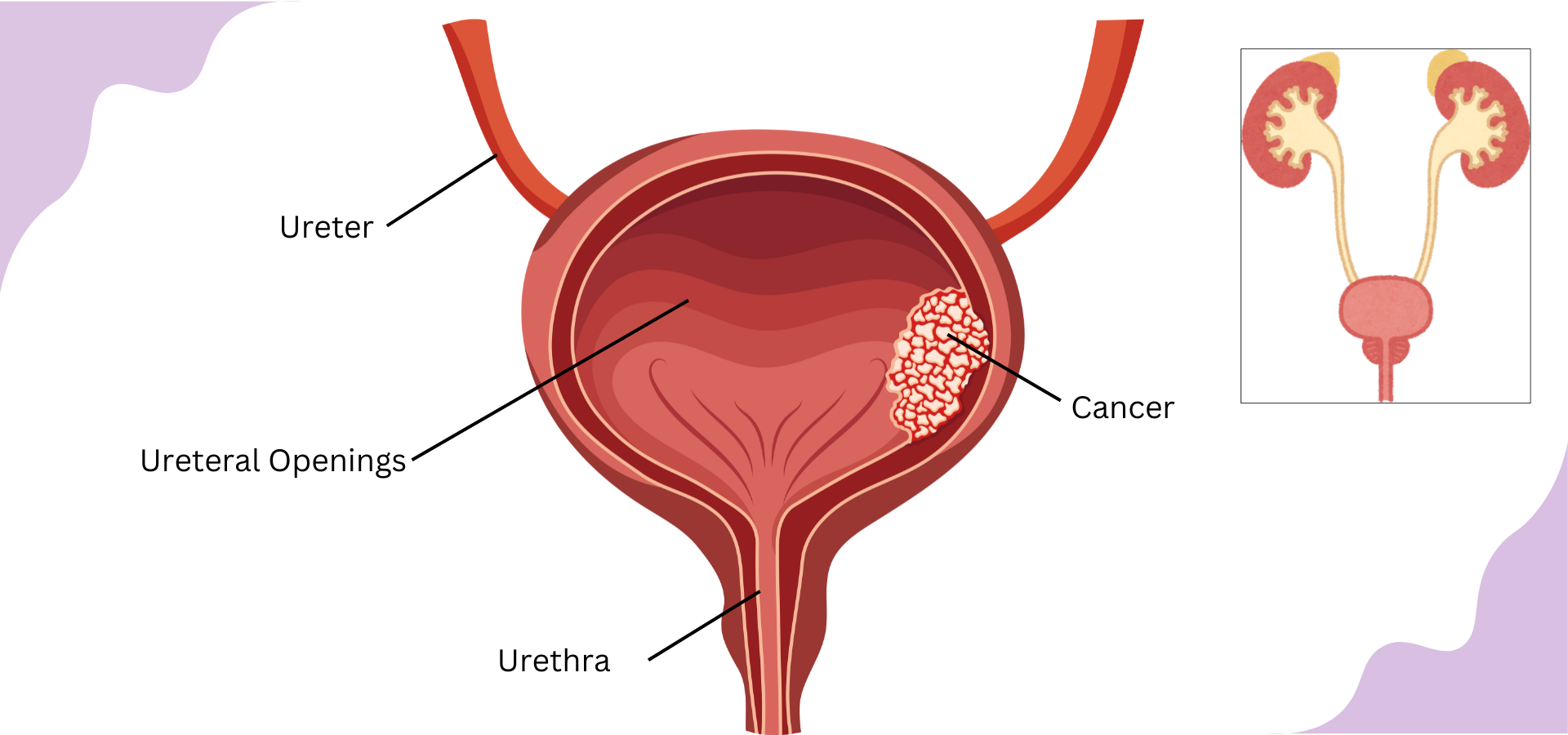Bladder Cancer
All Type of Cancers
Downloads
Download this book available in both Telugu and English Versions.

About Bladder Cancer
Bladder cancer begins in the bladder lining and can spread to nearby tissues if not detected early. It is more common in older adults and is often linked to lifestyle and environmental factors. The disease varies in severity, with some cases being easily treatable and others requiring aggressive treatment. Advances in medical research have led to improved diagnostic methods and treatment options. Regular health check-ups and early intervention can significantly improve recovery outcomes.Bladder cancer begins in the bladder lining and can spread to nearby tissues if not detected early. It is more common in older adults and is often linked to lifestyle and environmental factors. The disease varies in severity, with some cases being easily treatable and others requiring aggressive treatment. Advances in medical research have led to improved diagnostic methods and treatment options. Regular health check-ups and early intervention can significantly improve recovery outcomes.
Causes of Bladder Cancer
Bladder cancer develops when abnormal cells grow uncontrollably in the bladder lining, often due to long-term exposure to harmful substances. Smoking is the leading cause, as toxic chemicals in tobacco accumulate in the bladder. Industrial chemicals and workplace exposure (such as dyes, rubber, and paint fumes) can also increase risk. Chronic bladder infections, inflammation, and prolonged catheter use may contribute to cellular changes. Radiation therapy and certain chemotherapy drugs used in past treatments can also raise the likelihood of developing bladder cancer. Staying hydrated, avoiding smoking, and regular medical check-ups can help reduce risk.

Symptoms of Bladder Cancer
Bladder cancer symptoms can vary but often include:
- Blood in Urine (Hematuria) – The most common sign, causing pink, red, or dark-colored urine.
- Frequent Urination – An increased urge to urinate, even when the bladder isn’t full.
- Pain or Burning Sensation During Urination – Discomfort while passing urine.
- Lower Back or Pelvic Pain – May occur in later stages as cancer spreads.
- Urinary Incontinence or Difficulty Urinating – Trouble controlling urine flow or emptying the bladder.
Diagnosis of Bladder Cancer
Bladder cancer is diagnosed using various tests to detect abnormal growths and confirm the presence of cancer.
- Urine Tests (Urinalysis & Urine Cytology) – Detects blood, cancer cells, or abnormal proteins in urine.
- Cystoscopy – A thin, flexible tube with a camera is inserted into the bladder to examine for tumors.
- Biopsy (Transurethral Resection of Bladder Tumor - TURBT) – A sample of bladder tissue is taken during cystoscopy for analysis.
- Imaging Tests (CT Urogram, MRI, or Ultrasound) – Provides detailed images to check for tumors and cancer spread.
- Bone Scan or PET Scan – Used in advanced cases to see if cancer has spread beyond the bladder.
Treatment of Bladder Cancer
Bladder cancer treatment depends on the stage, type, and overall health of the patient. Common treatment options include:
- Surgery: Transurethral Resection of Bladder Tumor (TURBT) removes early-stage tumors, while cystectomy removes part or all of the bladder in advanced cases.
- Intravesical Therapy (BCG or Chemotherapy): Medication is placed directly into the bladder to treat early-stage cancer.
- Chemotherapy: Used before or after surgery to kill cancer cells, especially for muscle-invasive bladder cancer.
- Radiation Therapy: High-energy rays target and destroy cancer cells, often used if surgery isn’t an option.
- Immunotherapy & Targeted Therapy: Boosts the immune system or blocks specific cancer cell growth signals for advanced cases.